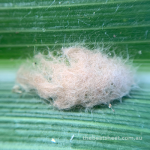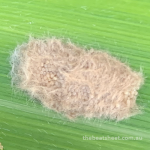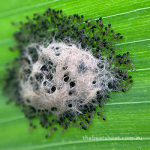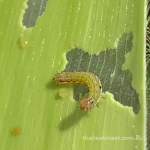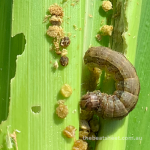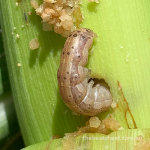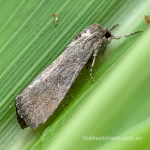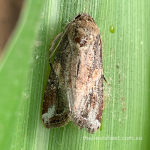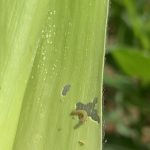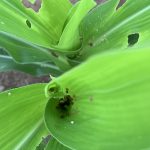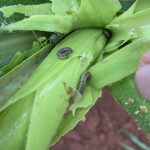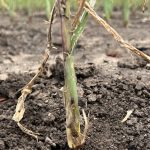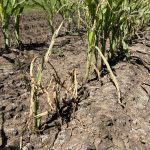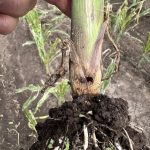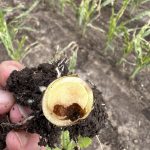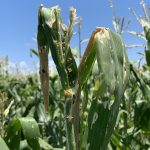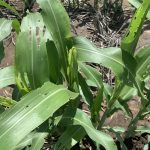Life stages
Fall armyworm eggs are laid in clusters and covered in scales, giving a ‘furry’ appearance. Neonates have translucent bodies with dark heads.
- Fall armyworm egg mass
- FAW egg mass showing individual eggs
- FAW egg mass hatching
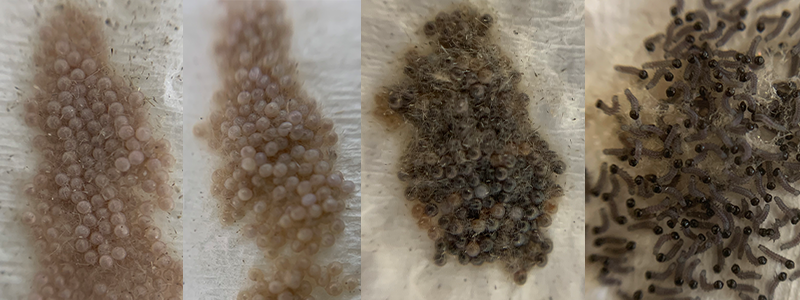
Development of larvae in eggs (left to right), newly laid eggs, head capsule just visible, dark head capsule very evident, neonate larvae hatching from eggs.
Young larvae (up to about 3rd instars) can look very similar to young helicoverpa and other armyworm species. Larger larvae are more easily distinguished (see FAW ID page).
- Small larva and windowing damage
- Medium larva and shot hole damage
- Large larva damaging cob
Pupae look similar to helicoverpa pupae, but are slightly smaller.
Female moths are a mottled grey, and males have a rusty patterned forewings.
- FAW female moth
- FAW male moth
Damage
FAW can attack a range of plant parts.
- Windowing damage by young larva
- Larvae can hide in the whorl
- Multiple larvae can infest a single plant
- Damage to young plants under high FAW pressure
- Severe and persistent defoliation resulting in stunted plants
- Larvae feeding at the base of plants resulting in the death of the growing point and ingress of pathogens
- Cross section of damage caused by larvae feeding at the base of the plant
- Tassel damage caused prior to emergence by FAW feeding in the whorl
- FAW damage in sorghum.
Natural enemies
A range of predators, parasitoids and pathogens can attack FAW.
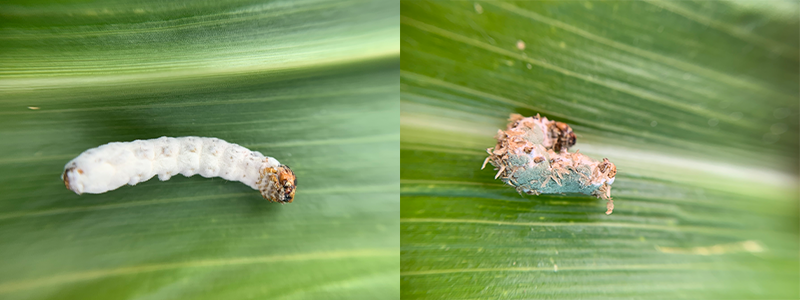
FAW larva killed by Metarhizium rileyi. The fungus can be white (just hyphae) or green (sporulating). Photos by Melina Miles.

